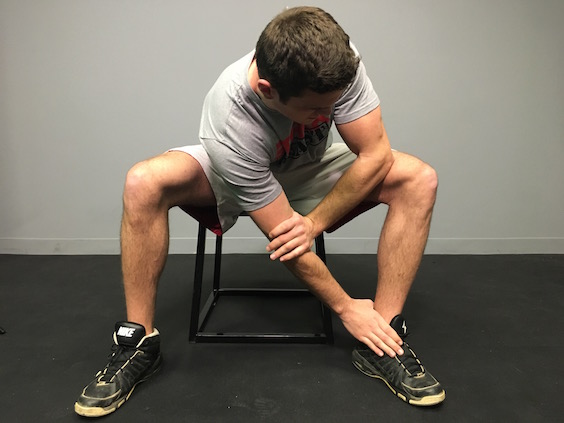How Many Push-Ups Can You Do? Your Answer Could Predict Your Risk of an Early Death
Quick, how many Push-Ups can you do?
No, not how many Push-Ups you say you can do—how many Push-Ups can you actually do before your muscles give out and you need a break?
Because a new study from researchers at the Harvard T.H. Chan School of Public Health details how your answer could reveal a lot about your risk of cardiovascular disease (CVD).
Cardiovascular disease is the leading cause of death worldwide, so finding tests that can help us predict a person’s risk for it is crucial. Submaximal treadmill test performance has been shown to help predict CVD risk, but it’s also “expensive, time-consuming, and often (requires) professional facilities and trained personnel to administer.”
A test of Push-Up capacity, on the other hand, can be performed virtually anywhere and takes very little time to administer. And according to this study, it does an even better job of predicting CVD risk than the traditional tests.
Here’s how the study was designed:
- The researchers analyzed health data from 1,104 active, middle-aged male firefighters between 2000 and 2010.
- The mean age of the participants was 39.6 and the mean body mass index (BMI) was 28.7.
- Participants’ Push-Up capacity and “sub-maximal treadmill exercise tolerance” were tested at the beginning of the study.
- The Push-Up test consisted of the firefighter being “instructed to begin Push-Ups in time with a metronome set at 80 beats per minute. Clinic staff counted the number of Push-Ups completed until the participant reached 80, missed three or more beats of the metronome, or stopped owing to exhaustion or other symptoms (dizziness, lightheadedness, chest pain or shortness of breath.)”
- Each participant completed annual physical exams (including a repeat of the aforementioned capacity tests) and health questionnaires during the first seven years of the study. They also reported any cardiovascular disease outcomes, such as diagnoses of coronary artery disease or major events like heart failure.
The Harvard Gazette summarized the results as such:
During the 10-year study period, 37 CVD-related outcomes were reported. All but one occurred in men who completed 40 or fewer Push-Ups during the baseline exam. The researchers calculated that men able to do more than 40 Push-Ups had a 96 percent reduced risk of CVD events compared with those who were able to do fewer than 10 Push-Ups. Push-up capacity was more strongly associated with lower incidence of cardiovascular disease events than was aerobic capacity as estimated by a sub-maximal treadmill exercise test.
Forty unbroken Push-Ups is certainly a lot, but even just a small improvement in your Push-Up capacity could signal a reduced risk of CVD, as men who performed between 11-20 Push-Ups had a 64 percent reduced risk of CVD compared to those who could perform no more than 10. And while younger men generally were able to perform more Push-Ups than older men in this study, the authors write that “even after adjusting for age and BMI, we observed an independent association of push-up capacity with CVD outcomes.” It would be nice to know what exactly counts as a successful Push-Up in these tests, however, and the authors warn against assuming the same results apply to populations other than those included in the study without further research.
Due to a process called sarcopenia, men and women can lose anywhere between 30-50% of their muscle strength between the ages of 30 and 80. Research is showing that maintaining or increasing our muscle strength during this period could have a robust impact on overall health. A 2018 study published in the journal Medicine found that increased handgrip strength was associated with a lower degree of cardiovascular risk in both Korean men and women.
Photo Credit: FatCamera/iStock
READ MORE:
RECOMMENDED FOR YOU
MOST POPULAR
How Many Push-Ups Can You Do? Your Answer Could Predict Your Risk of an Early Death
Quick, how many Push-Ups can you do?
No, not how many Push-Ups you say you can do—how many Push-Ups can you actually do before your muscles give out and you need a break?
Because a new study from researchers at the Harvard T.H. Chan School of Public Health details how your answer could reveal a lot about your risk of cardiovascular disease (CVD).
Cardiovascular disease is the leading cause of death worldwide, so finding tests that can help us predict a person’s risk for it is crucial. Submaximal treadmill test performance has been shown to help predict CVD risk, but it’s also “expensive, time-consuming, and often (requires) professional facilities and trained personnel to administer.”
A test of Push-Up capacity, on the other hand, can be performed virtually anywhere and takes very little time to administer. And according to this study, it does an even better job of predicting CVD risk than the traditional tests.
Here’s how the study was designed:
- The researchers analyzed health data from 1,104 active, middle-aged male firefighters between 2000 and 2010.
- The mean age of the participants was 39.6 and the mean body mass index (BMI) was 28.7.
- Participants’ Push-Up capacity and “sub-maximal treadmill exercise tolerance” were tested at the beginning of the study.
- The Push-Up test consisted of the firefighter being “instructed to begin Push-Ups in time with a metronome set at 80 beats per minute. Clinic staff counted the number of Push-Ups completed until the participant reached 80, missed three or more beats of the metronome, or stopped owing to exhaustion or other symptoms (dizziness, lightheadedness, chest pain or shortness of breath.)”
- Each participant completed annual physical exams (including a repeat of the aforementioned capacity tests) and health questionnaires during the first seven years of the study. They also reported any cardiovascular disease outcomes, such as diagnoses of coronary artery disease or major events like heart failure.
The Harvard Gazette summarized the results as such:
During the 10-year study period, 37 CVD-related outcomes were reported. All but one occurred in men who completed 40 or fewer Push-Ups during the baseline exam. The researchers calculated that men able to do more than 40 Push-Ups had a 96 percent reduced risk of CVD events compared with those who were able to do fewer than 10 Push-Ups. Push-up capacity was more strongly associated with lower incidence of cardiovascular disease events than was aerobic capacity as estimated by a sub-maximal treadmill exercise test.
Forty unbroken Push-Ups is certainly a lot, but even just a small improvement in your Push-Up capacity could signal a reduced risk of CVD, as men who performed between 11-20 Push-Ups had a 64 percent reduced risk of CVD compared to those who could perform no more than 10. And while younger men generally were able to perform more Push-Ups than older men in this study, the authors write that “even after adjusting for age and BMI, we observed an independent association of push-up capacity with CVD outcomes.” It would be nice to know what exactly counts as a successful Push-Up in these tests, however, and the authors warn against assuming the same results apply to populations other than those included in the study without further research.
Due to a process called sarcopenia, men and women can lose anywhere between 30-50% of their muscle strength between the ages of 30 and 80. Research is showing that maintaining or increasing our muscle strength during this period could have a robust impact on overall health. A 2018 study published in the journal Medicine found that increased handgrip strength was associated with a lower degree of cardiovascular risk in both Korean men and women.
Photo Credit: FatCamera/iStock
READ MORE:











